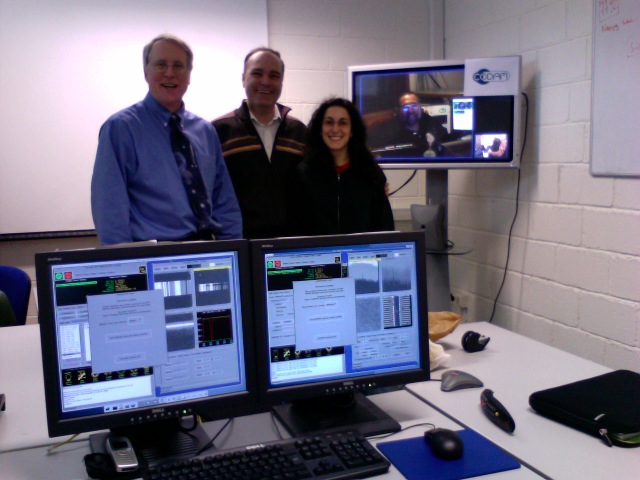How could a Paris Observatory team measure this asteroid, which passed the opposite side of the Earth, soaring over Tahiti? A special facility of the Observatory, the Centre d’Observation à Distance en Astronomie à Meudon (CODAM, hosted by Paris Observatory) allowed the Paris team to command the 3 metre diameter telescope IRTF, a highly specialized telescope located at Mauna Kea, Hawaii. From Meudon, the Paris team was able to use the Hawaii telescope to track down the space intruder and capture its light into the telescope’s near-infrared spectrograph, SpeX.

The resulting spectral colors, measured over the infrared wavelengths 0.8-2.5 micron, revealed characteristic signatures of the minerals olivine and pyroxene (commonly found in both meteorites and Earth rocks), placing the asteroid into a category that astronomers refer to as the S-class. By knowing this class, the team can associate 2009 DD45 with other small S-class asteroids which have measured values for their reflectivity; about 36% of the sunlight hitting the asteroid is reflected (results from Delbo et al. 2003, Icarus 166, 116).From the brightness of the asteroid, and its reflectivity, the Paris team could deduce the mean diameter to be 19 +/- 4 meters.
